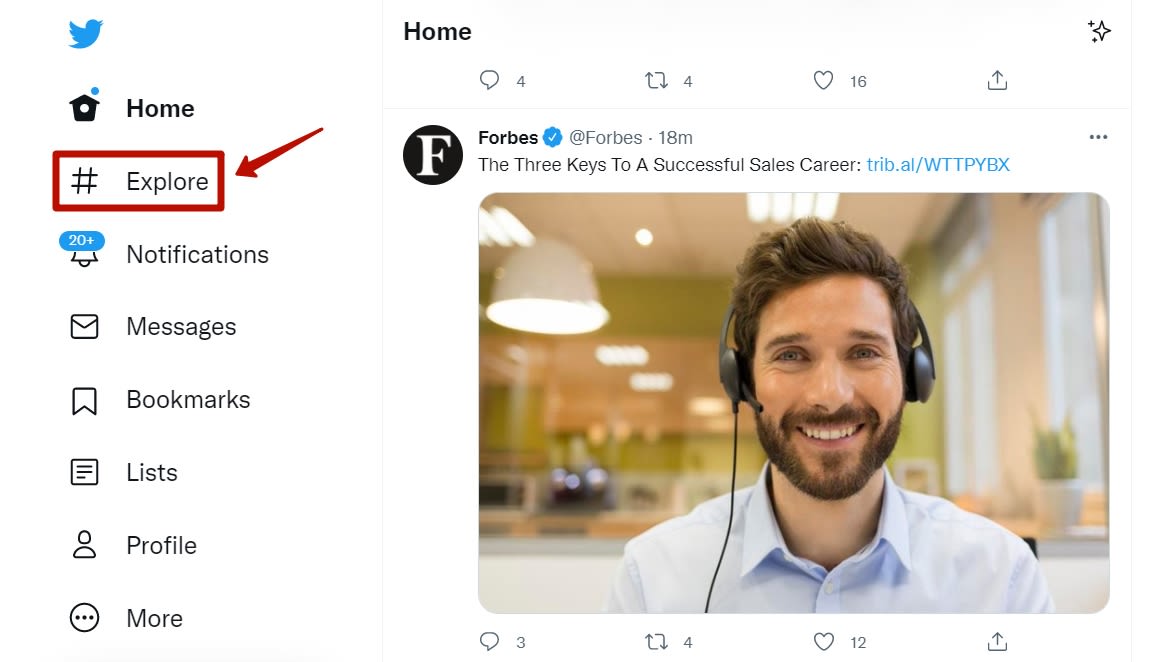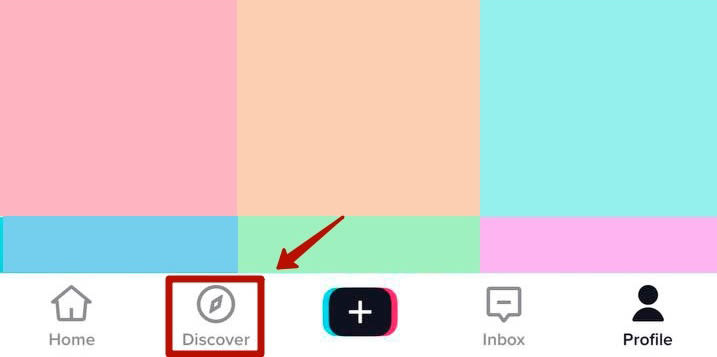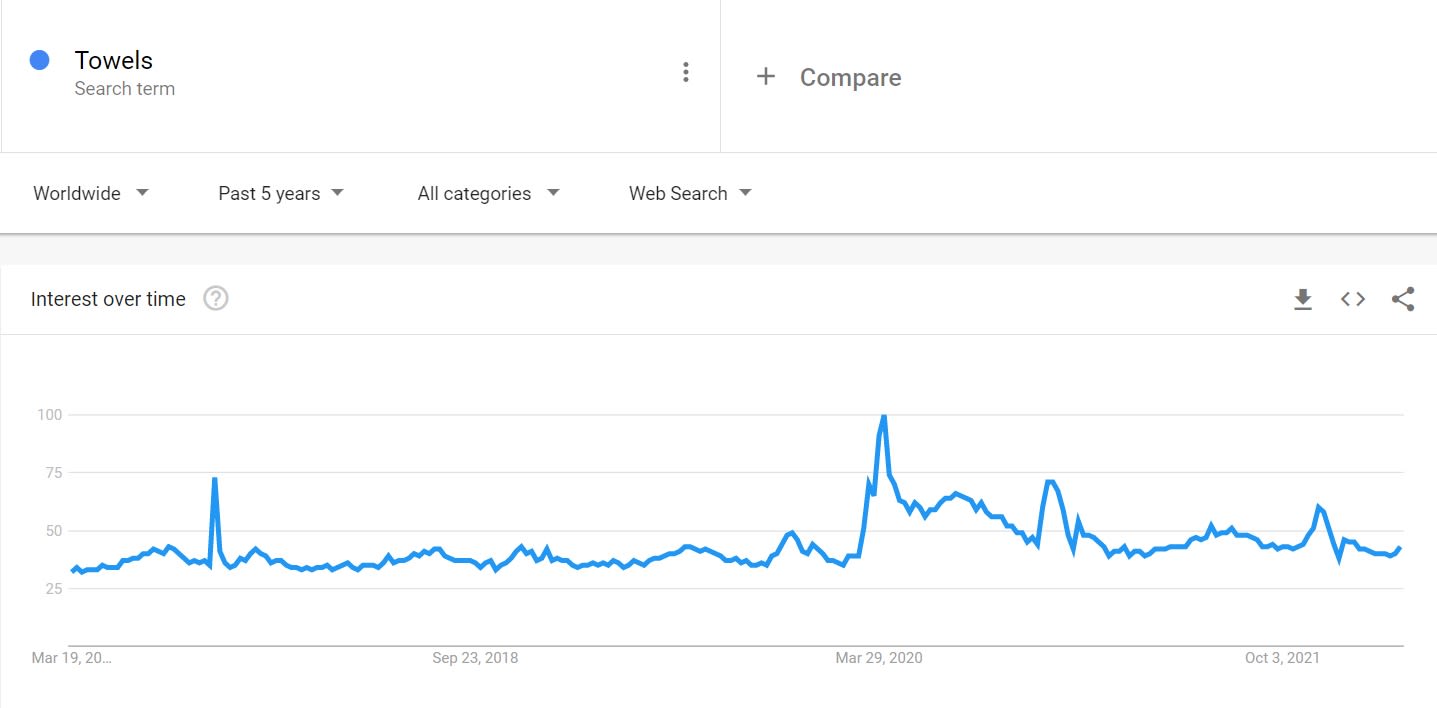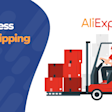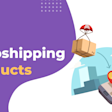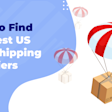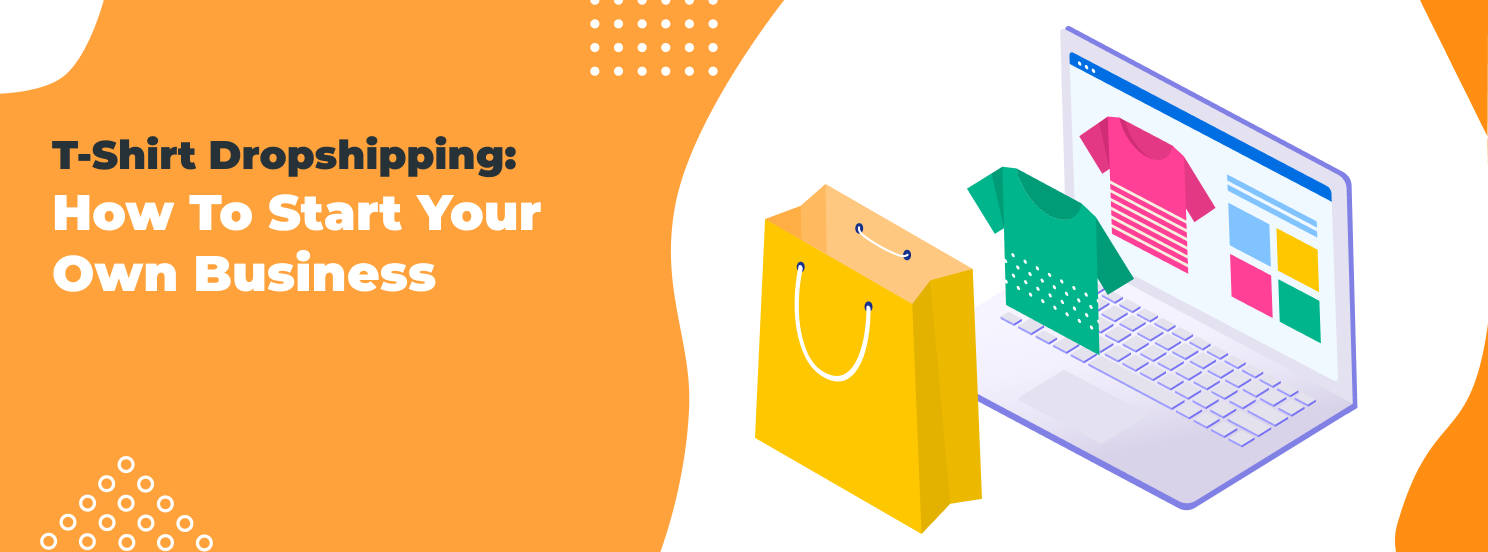
T-Shirt Dropshipping: How To Start Your Own Business
With the meteoric 14.2% growth of eCommerce in 2022, there's never been a better time to launch your dropshipping business.
However, with seemingly so much to learn, newcomers often feel baffled as to how to get their foot in the door of this booming industry.
If you can relate, never fear.
Today, we’re providing some sage advice on how to launch your own t-shirt dropshipping business. There’s lots to cover, so grab a cup of coffee, and let’s dive straight in.
Table of contents
What’s a T-Shirt Dropshipping Business, and Why Should You Start One?
Before diving into the nitty-gritty of this blog post, let’s take a few seconds to ensure we’re all on the same page. Therefore, for the uninitiated, let’s take a quick look at what dropshipping is:
Dropshipping
In short, dropshipping is a convenient way to kickstart an eCommerce business without the hefty start-up costs, because you don’t have to purchase stock in bulk or concern yourself with warehousing costs. Instead, you buy products from a third-party supplier, and they ship your orders directly to your customers.
In a nutshell, dropshipping’s basic process is as follows:
Choose a dropshipping fulfillment supplier
Your customer places an order via your online shop
The order is sent to your dropshipping supplier
The dropshipping supplier prepares the order and ships it to the customer
As such, as well as not having to shell out for costly upfront costs, dropshipping boasts several benefits:
You don’t have to create your own products.
You can work from anywhere because you don’t need to be onsite to manage your store. You just need an internet connection to set things up and keep your dropshipping business ticking over.
Dropshipping is a very scalable business model.
Why T-shirts?
Now that we’ve covered the dropshipping basics, let’s focus on the kinds of products you could sell.
T-shirts are an easy choice for first-time dropshippers. For starters, the online custom t-shirt industry skyrocketed to $3.64 billion in 2020, and experts predict that this sector will continue growing.
The moral of the story? There’s an established market and demand for online t-shirt businesses selling customizable products.
So, how do you go about meeting this consumer demand? The best way is to utilize a reliable dropshipping platform like Spocket that also offers print-on-demand options.
How To Start Your Own Business Dropshipping T-Shirt Lines
The first step to creating a successful online t-shirt business is to ask yourself some questions about the type of brand you’re trying to create.
For instance:
Who are my products for?
How can I make myself stand out?
Where will customers find and be able to purchase my products?
How will I promote my products?
Unsure how to answer these questions? Let’s figure them out together:
Know Your Audience
Market research is integral for building a detailed customer avatar. This should include your consumer’s interests, demographics, locations, and buying behaviors. That being said, let’s look at some of the basic steps for creating a compelling customer avatar.
Step 1: Gather Information
This is arguably one of the most critical steps in creating your customer avatar. You can gather this information via interviews, data generated from marketing campaigns, and customer surveys.
As a starting point, try and garner the following info:
Location, gender, marital status, age, occupation
What are they passionate about?
What do they want regarding their clothing? What’s their style?
By identifying your target demographic, you can better tailor your product to meet consumer demand. For example, suppose your demographic is predominantly single females under 20. In that case, you can gather information using the steps below to create a product that meets the needs of that specific demographic.
Step 2: Identify Current Trends
The key to starting your t-shirt dropshipping business on a high note is to ensure that you have some designs that are relatable, especially with the current trends. Head to your social media accounts (TikTok and Twitter are recommended) to find more information.
Here are some of the things that you can do:
On Twitter, head to the Explore section to find current trends and trending hashtags. This is a great way to find out what the current events are that are happening around the world or within certain niches.
On TikTok, head to the Discover section to find current video trends. Not only is this a great way to find potential topics that your customers would be interested to see on a t-shirt, but you’ll also get some great ideas on how to market them on your social media!
Step 3: Identify Your Customer’s Pain Points
Now it’s time to dig deeper by gathering information about your client’s pain points. With this info on hand, you’re better positioned to identify areas where your business can help.
Head to forums in your industry. Are people in your niche asking similar questions? Are they complaining about something in particular? If so, make a note of this and consider how your brand could respond.
Step 4: Name Your Avatar
This may seem like a silly step. However, it can help make your avatar easier for you and your team to remember and reference. For example, if you’re selling clothes, and your ideal customer is someone who loves fashion, you could name the avatar “Fashionista Fiona”.
Product Research
You also want to ensure the products you’re considering selling will, in fact, sell. Qualifying potential products requires some research. To kickstart this process, we’ve listed a few handy resources:
AMZScout: Platforms such as AMZScout provide a complete toolset to find profitable, low-competition products and to discover popular product keywords on Amazon. Amazon shows global trends, that is why you can use AMZScout data for the other marketplaces and your own site as well. This allows you to set yourself apart from your competition from the get go!
Spocket: Utilize Spocket to identify trending dropshipping products. You can also browse thousands of bestselling products and quickly identify the top products within several subcategories. Here, Spocket reveals the top five products within each category in real-time.
Google Trends: Enter a topic into the search to discover the demand for your product over set locations and different periods. Ideally, you want your product to show steady popularity.
TweetDeck: This free tool examines popular hashtags and posts related to your topic.
Hootsuite: You can use this platform to research industry and topic growth predictions. Hootsuite’s free plan offers limited analytics access.
Social media: Head to the social media platform of choice to see what’s trending - this is especially useful if you’re using Twitter, Instagram and/or TikTok.
Your competitors: Competitor research helps you understand why your customers purchase products from your competitors and how they market their products. You can improve your own products and marketing techniques with this info in hand. If you’re unsure where to start with competitor research, try the following platforms:
Social Mention: A free social media tool that scans the internet for content related to your topic. Social mention monitors over 100 social media sites and allows you to search for specific keywords. It’s also an excellent tool for tracking your social media presence and your competitors’. It provides comprehensive data about what’s being said about the product/company/topic online.
Ubersuggest: Here, you can search competing websites to see which keywords generate the most traffic to their site. They offer a 7-day free trial and three paid-for plans: Individual ($12 per month), Business ($20 per month), and Enterprise/Agency ($40 per month).
Semrush: Utilize this platform to see what customers are searching for and which competitors appear at the top of the results page. You can use Semrush for free by creating a free account, providing limited perks.
Selling Your Products
With a clearer idea of the products you'll sell, you’re better positioned to create your online store. The easiest way to do this is to use an eCommerce platform. An eCommerce platform is essentially software that provides everything you need to design and launch your eCommerce website without writing any code. There are literally hundreds of eCommerce platforms to choose from, so you’ll need to do a bit of research to figure out the best option for your business.
That being said, we’ve listed a couple of our top picks below:
Amazon:
Amazon has an estimated 300 million active users. Needless to say, Amazon is one of the leaders when it comes to retail purchases. This enormous traffic allows you to sell products without any real marketing in many cases.
Other reasons to sell on Amazon include the fact that Amazon has a massive brand recognition. Customers trust Amazon, but many individuals are wary of buying from websites that they’ve never heard of before.
Lastly, Amazon helps take care of all the hassle associated with accepting payments and fraud protection. This is a great way to start your business without having to worry about these risks.
Hostinger:
Hostinger offers a comprehensive solution to make a store online. This tool’s Online Store Builder is an all-in-one solution for building and web-hosting services, and enables you to build a fully-fledged eCommerce store with reliable performance and availability.
The Online Store Builder offers a user-friendly interface and powerful design tools. The minimalistic layout ensures easy navigation, resulting in a seamless user experience. Here are some of Hostinger Online Store Builder’s key features:
Ready-made templates. Choose from designer-made, responsive eCommerce templates and customize the elements to align with your brand. No coding required, thanks to its powerful pixel-perfect, drag-and-drop functionality.
Various product types. You can sell up to 500 physical items, digital products, or services. For each product, Hostinger allows for up to 50 options.
Multiple payment options. You can integrate a wide range of payment options, with 20+ choices available globally, including kevin., Stripe, and PayPal.
Tracking. Whether you need support for orders that have been placed or sales campaigns that include discounts and promo codes, Hostinger provides easy inventory and order management. Hostinger also offers a simple checkout experience to minimize cart abandonment.
Built-in SEO tools. Boost your online store’s visibility in search engines by optimizing your keyword usage on alt texts, meta titles, and website content. You can also integrate advertising tools like Facebook Ads, Instagram Ads, and TikTok Ads.
Unbeatable Website Speed. Ensure fast website loading times to avoid losing potential visitors.
Advanced Security Features. Protect your website and data with free unlimited SSL security certificates for traffic encryption. Safeguard against DDoS attacks with Cloudflare-protected nameservers. Automatic backups help secure your files.
Most importantly, you can rest assured that you’ll get support and assistance from Hostinger’s agents via 24/7 live chat, directly from the builder. Alternatively, you can access the self-help customer service through in-depth tutorials, an extensive knowledge base, and the Hostinger Academy YouTube channel to help you grow your online shop and acquire new skills.
Shopify:
With over one million businesses currently using Shopify, Shopify is one of the most popular eCommerce platforms for newbies and pros alike. Shopify offers tons of tools that make setting up a t-shirt dropshipping business a breeze. Most notably, it allows you to:
1. Create an online store: Choose from over 70 free and premium themes. Then, customize your chosen template using Shopify’s new ‘theme setting editor,’ enabling you to preview your storefront as you edit it.
2. Integrate your socials: A few of Shopify’s themes include social media buttons as standard. However, if your chosen template doesn’t, integrating your socials is a breeze.
3. Create customer profiles: A customer profile is automatically created whenever a consumer:
Signs up for a customer account or to your mailing list
Places an order
Starts an order but abandons their cart
Alternatively, you can add a customer profile manually.
4. Manage customer payments: You can offer customers a variety of payment providers, including PayPal, Facebook Pay, Amazon Pay, and Apple Pay. You can also accept alternative methods of payment such as Cryptocurrency. Shopify also provides its own payment gateway, “Shopify Payments”. Shopify claims this is the simplest method of receiving payments, as it eliminates the need for a third-party provider.
5. Seamlessly integrate with dropshipping and print-on-demand services.
BigCommerce
With over 60,000 businesses trusting BigCommerce, and a 1-month free trial to see if it’s the right fit for you, BigCommerce is undoubtedly worth considering. So, let’s take a look at some of its core features:
Website building: Thanks to BigCommerce’s intuitive drag and drop builder, it’s perfect for those wanting to build a website without any technical know-how. There are around 170 themes to choose from, including free and premium options. You have full reign over your web design, including text, banners, images, colors, layout, etc.
SEO optimization: BigCommerce comes with built-in SEO features such as on-page optimization, keyword research, Microdata, and Schema Makeup. They also provide analytics on customer insights and the visibility of your web pages.
Payment management: BigCommerce offers over 65 pre-integrated online payment solutions, for over 140 currencies, across 230 countries. With so much choice, you’re bound to find the perfect third-party payment provider to suit your needs, location, and customer demographic. Popular payment options include Stripe, PayPal, Apple Pay, Amazon Pay, Barclaycard, and Cybersource.
Integrations with several email marketing services: BigCommerce integrates with many email marketing services, including Mailchimp, SmartrMail, Constant Contact, and Marsello.
Promotion and Marketing
So, now that you have products to sell and an online store, it’s time to start promoting your brand. As you begin constructing your marketing plan, heed the advice below:
Research competitor content - their social posts, FAQs, blog content, etc., to give you a feel for the kind of content that works for your niche.
Create non-promotional content surrounding your niche to add value to your brand. For instance, if you’re selling nature-themed t-shirts, you could publish blog and social media content about sustainability, eco-friendly recommendations, conservation, etc. This goes a long way to boost brand credibility and authenticity.
Reach customers where it matters. For instance, TikTok is popular with Gen Z; 63% of youths use it daily. If that’s your target demographic, head over there to see what's trending and join in with your own videos. They don't have to be extravagant, just relevant and meaningful to your audience. In contrast, Facebook is the place to be if you’re appealing to Millenials, with a whopping 70% stating they would be likely to use it for business.
Ensure brand consistency. I.e., your message and brand identity should be the same across all the marketing channels you’re using.
Managing and Refining Your Dropshipping Business
Once you start generating sales, your work doesn't end there. Now, it's time to optimize your approach. You can kick-start this process by asking yourself:
What has your customer feedback been like? You want to create the best customer experience possible so that they buy from you again. So, adapt to meet your customer's expectations.
Is your customer avatar up-to-date? There’s little point in creating an avatar once and never looking at it again to revise it. Instead, always be on the lookout for changes in your customer demographic and target market. Needless to say, this will affect what you sell and how well you sell it.
Are you keeping on top of emerging trends? Trending products help generate a quick profit, but some trends are short-lived and fizzle out. As such, you have to continually stay on top of emerging trends to attract enough demand. Take the fidget spinner, for example. This product has been around for about 25 years, but it was only in 2017 that it started trending, with nearly 19 million being sold that year. But, this fad fizzled out and doesn’t hold much interest now. In light of that, as well as selling trending items, identify steady sellers. These products have proven to be consistently popular over a sustained period.
Tips and Takeaways
As we bring this blog post to a close, here are our essential tips and takeaways for starting your own t-shirt dropshipping business:
Take a customer-focused approach: You’re better positioned to provide customers with what they actually want by knowing your ideal customers inside out and back to front. That’s why engaging with customers through surveys and social media is essential.
Build your brand around the customer experience, not the product: Consumer loyalty is about brand trust, adding value, and creating a community. People don't buy from businesses; they buy from people. So, cultivate your online identity carefully by focusing on the customer experience and garnering trust from your audience.
Stay on top of your SEO: SEO (Search Engine Optimization) is essential for driving traffic to your website. According to one study, 68% of all online experiences begin with search engines and drive 1,000%+ more traffic than social media. So, it’s worth finding and using an SEO checklist or an SEO plugin like Yoast to make sure you’re optimizing your web pages.
Conclusion
We hope this helps you build your own t-shirt dropshipping business. We wish you the best of luck with your new venture.
